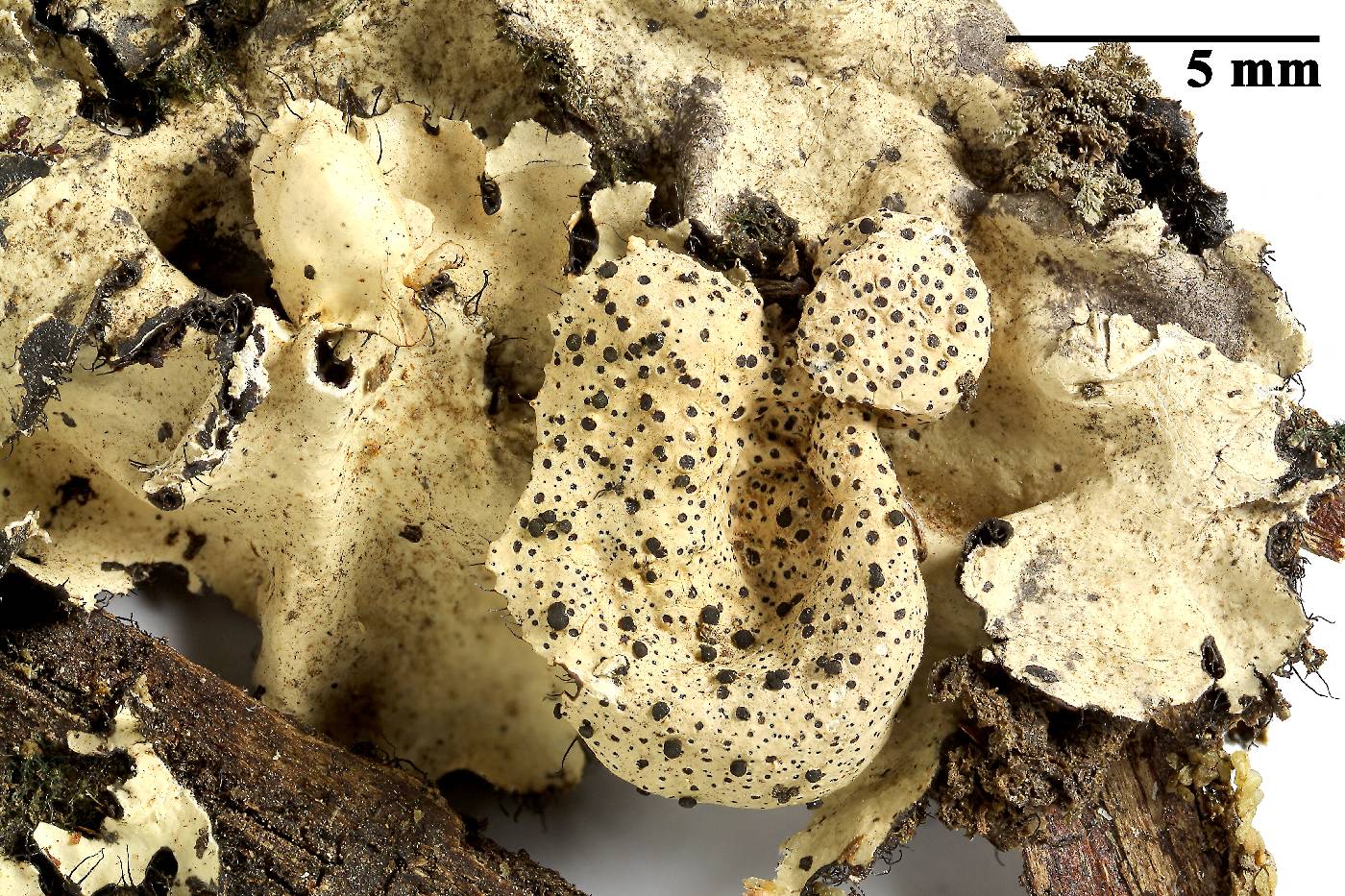
Consortium of Lichen Herbaria
- building a Global Consortium of Bryophytes and Lichens as keystones of cryptobiotic communities -
- Home
- Search
- Images
- Species Checklists
- US States: O-Z >
- US National Parks
- Central America
- South America
- US National Parks
- Southern Subpolar Region
|
Family: Lichenoconiaceae |
Nash, T.H., Ryan, B.D., Gries, C., Bungartz, F., (eds.) 2004. Lichen Flora of the Greater Sonoran Desert Region. Vol 2. Life habit: lichenicolous, commensalistic, non-lichenized Mycelium: immersed in the host thallus, hyaline, in some species I+ blue Ascomata: apothecial, superficial, rarely partly immersed when young, black, often with a yellowish, golden or greenish pruina, 100-600 µm in diam., from the beginning strongly convex margin: indistinct exciple: indistinct epihymenium: dark brown or greenish, frequently K+ green ("abrothallin"), with granulose pigments, often dissolving in K hymenium: hyaline to pale brown, I- and KI- paraphyses: filiform, especially apically branched and anastomosed, apically not or poorly enlarged, hyaline hypothecium: thick, brown asci: elongate ellipsoid to clavate, fissitunicate, wall laterally thin, apically strongly thickened, with a distinct ocular chamber, without any amyloid reactions (I- and KI-), 4-8-spored ascospores: brown, ellipsoid, verruculose, 1-3-septate, constricted at the medium septum, cells frequently slightly unequal in width and length Conidiomata: pycnidial, black, partly immersed or superficial, ostiolate; wall: pale to dark blackish brown; conidiophores: absent; conidiogenous cells: hyaline, holoblastic, ampulliform conidia: hyaline to pale yellow, obpyriform to ellipsoid, collecting in a mucilaginous mass, simple, basally distinctly truncate, surface finely verruculose Geography: cosmopolitan Substrate: thallus of parmelioid lichens and other macrolichens. Notes: The genus Abrothallus is in an urgent need of a modern revision. Especially for the abundant material on parmelioid lichens, it is not clear if some species can grow on several hosts, or if each host genus has its own (one or even several) Abrothallus species. Also, the taxonomic value of some characters, like the iodine reaction of the mycelium, is not entirely clear. The treatment below is not based on a revision of the available material. Instead, it is a mixture of data found in the literature and of personal notes, accumulated during the past 15 years. It must be understood as an identification aid, as long as we are waiting for a revision of the genus, and the reader should accept that some information presented here has not been checked or confirmed, and might be erroneous. |
Powered by Symbiota









